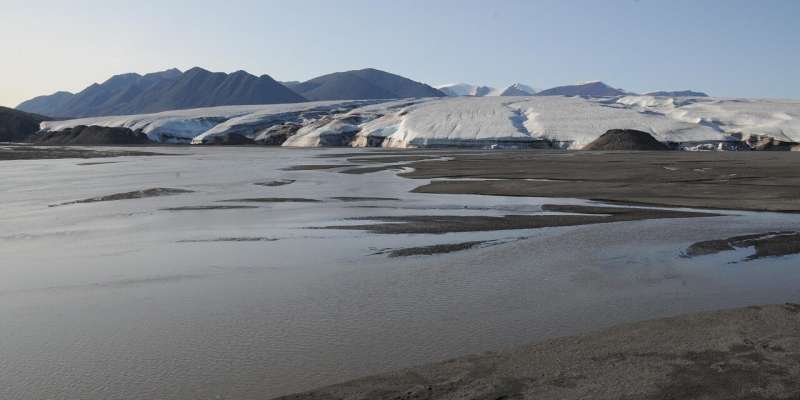Glacier-fed rivers may consume atmospheric carbon dioxide

Glacier-fed rivers in Northern Canada may be consuming significant amounts of carbon dioxide from the atmosphere, according to new research by University of Alberta biologists.
The researchers examined the Lake Hazen watershed in Quttinirpaaq National Park on Ellesmere Island in Nunavut to study the impact of melting glaciers on freshwater systems.
"We observed that concentrations of carbon dioxide in the rivers were much lower than in the atmosphere, meaning that rivers are actively consuming carbon dioxide from the atmosphere," explained Kyra St. Pierre, who conducted the study as a Ph.D. student under the supervision of professor Vincent St. Louis.
The researchers attribute the difference in CO2 levels to a process called chemical weathering—a series of chemical reactions that occur as materials like rocks, sediment and soil come into contact with water and gases from the atmosphere.
"Glacial landscapes are special in that they have huge expanses of finely ground sediments created by the glaciers themselves as they advance and retreat," said St. Pierre. "As these sediments mix with meltwaters, which in turn mix with the atmosphere, they can undergo a number of potential chemical weathering reactions, some of which consume carbon dioxide."
But while reducing levels of atmospheric carbon dioxide may sound like good news, it comes at the yet-unknown cost of melting glaciers.
"The melting of glaciers in mountain and polar regions is one of the most striking consequences of climate warming, but it's not always clear what this means," said St Pierre.
"Many of the world's rivers, including the Athabasca and Fraser rivers here in Western Canada, originate from glaciers. And yet, despite their importance in our everyday lives, we actually know very little about how glacier-fed freshwaters function."
Future research will investigate how common this weathering phenomenon is around the world and how it differs between different regions with glaciers. Work in Jasper and Banff national parks is already underway, with plans to expand to other glacier-covered areas in Canada and around the world.
The study, "Proglacial Freshwaters Are Significant and Previously Unrecognized Sinks of Atmospheric CO2," was published in Proceedings of the National Academy of Sciences.
More information: Kyra A. St. Pierre et al. Proglacial freshwaters are significant and previously unrecognized sinks of atmospheric CO2, Proceedings of the National Academy of Sciences (2019). DOI: 10.1073/pnas.1904241116
Journal information: Proceedings of the National Academy of Sciences
Provided by University of Alberta





















